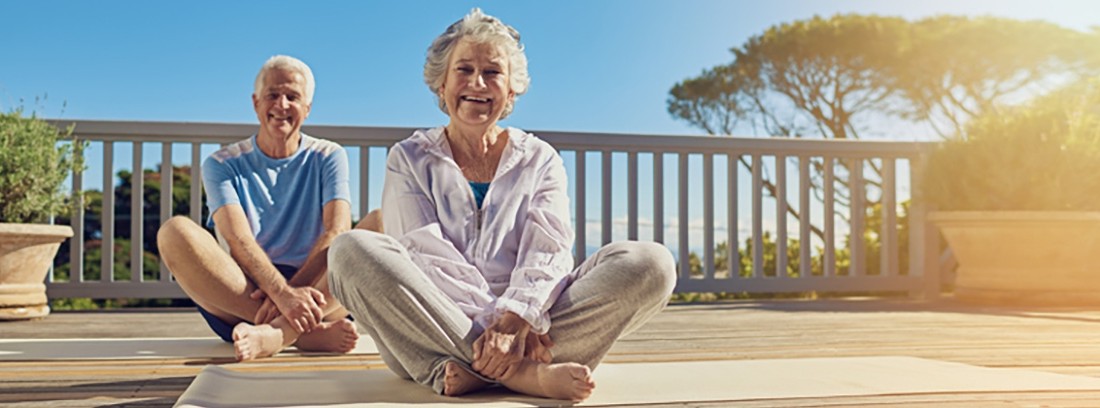Prevention of immobility syndrome in older people

As with any health problem, prevention is better than cure. In this sense, several studies have valued the prescription of physical exercise and maintaining physical activity as the best way to prevent immobility and reduce the risk of evolution to frailty in older people. The benefits of exercise do not diminish with age, it continues to produce an increase in cardiovascular capacity, muscles (both in volume and strength) and bone density, reduces anxiety, aggressiveness and depressive symptoms, and favors socialization. The elderly person who leads an autonomous and active lifestyle with regular exercise has a statistically lower risk of mortality. The elderly who have always exercised age better and have less functional disability, their old age is healthier.
It is necessary to encourage the elderly to be active and suggest that they go to clubs for the elderly or day centers, if possible. It is also important to allow the older person to do or participate as much as possible in the activities of daily living at their own pace. It is necessary to avoid overprotection on the part of the caregiver, doing the tasks "faster and better" for him since this accelerates the degree of dependency, due to disuse.
The prescription of exercise in the elderly must meet a series of conditions:
- Carry out periodic reviews of your physical condition, individually adjusting the type of exercises and activities you can do. Thus, the frequent multiple pathologies at the cardiovascular and musculoskeletal level must be taken into account.
- Know the drugs that are being taken, since many can have repercussions on the exercise to be performed (antihistamines, beta-blockers, insulin, etc.).
- Establish minimum activity goals with the elderly depending on their functional capacity.
- Pay attention to the correct learning of the techniques.
- Evaluate the motivation of the elderly since the capacity for enjoyment and entertainment are the best factor for adherence to exercise. Therefore it must be adapted to individual tastes.
Generally recommended activities may include walking, cycling, swimming, golf, dancing, gardening, Tai Chi, etc. The prescription of exercise by doctors should be prescribed (for example, walk 5 minutes a day and climb another 5 minutes each week) and design individualized strategies, with the most appropriate and pleasant type of exercise for the elderly.
In healthy elderly, exercise sessions should include:
- A warm-up phase with muscle stretching (3 to 5 minutes) and a gentle walk lasting 5 to 10 minutes.
- Strengthening exercises (arm extensors, weights and pulleys, use of stairs and steps) and coordination-balance.
- Progressive resistance exercises (jumping, running ...), if tolerated.
- Finish with a cool-down period of no more than 10 minutes, with muscle stretching exercises and light walking with decreasing speed.
In summary
The activity will include flexibility work (stretching), strengthening and coordination-balance and later resistance (aerobic capacity). Continuity in exercise is more important than intensity. It is recommended to start exercising two or three days a week up to five, alternating physical activity with rest situations. In the same way, the physical effort will gradually intensify.
Regarding technical aids to be able to maintain physical activity when there are limitations to perform it, the main ones are:
- Canes: help to maintain balance, distribute the weight and effort of ambulation when one of the lower extremities cannot perform its function well. It is recommended to use them in the hand opposite to the affected leg and it is important to adjust the height of the cane, so that the handle reaches the height of the wrist, with the arm outstretched (an inadequate height will cause pain and injury in the upper extremities and back ). There are several types of cane, depending on the needs: one leg or several, crook or anatomical handles, etc.
- Crutches: in the case of also presenting weakness in the upper extremities, the use of crutches or English canes (which have additional support in the forearm) is ideal.
- Walkers: in the case of marked instabilities or generalized weaknesses, they are perfect for maintaining ambulation with less risk of falling. There are several types, suitable for different situations: four-legged, articulated, four-wheel with brake, front wheels and rear legs, etc.
In any case, when the use of technical aids is considered necessary, it is important to consult with a professional on the subject, be it an orthopedist, occupational therapist or doctor, to advise what is the most appropriate technical aid for each case and how it should be used.
(Updated at Apr 14 / 2024)